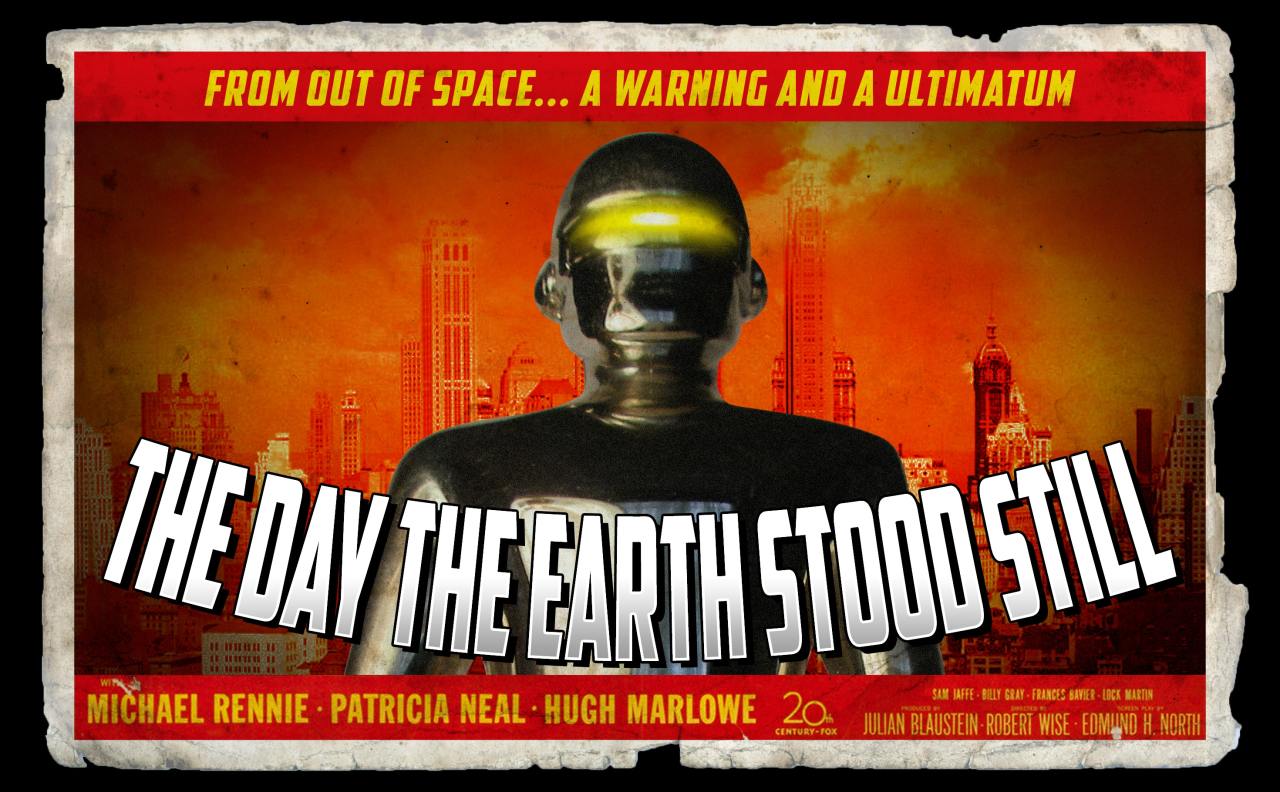How to Deal With Movies
That Bounce From
🔉 Too Quiet to Too Loud 🔊

There’s no need to have your finger constantly hovering over the volume buttons.
Popular Science Whitson Gordon
Popular Science Whitson Gordon

.gif)
I love big movie explosions as much as anyone, but I have a bone to pick with movie studios: It feels like every time I watch an action movie, I have to turn the volume way up just to hear the characters speak, then quickly turn it down every time something explodes. And when I’m not quick enough on the draw, my sleeping wife gets very angry.
Why do movies do this?
It all has to do with dynamic range - undtrack. The wider the range, the larger the dramatic impact, explains Scott Wilkinson, audiovisual technology journalist and consultant (and the “Home Theater Geek” on TWiT.tv). In other words, they mix it that way so when that explosion finally happens, it kicks you in the gut and rocks your world.
It all has to do with dynamic range - undtrack. The wider the range, the larger the dramatic impact, explains Scott Wilkinson, audiovisual technology journalist and consultant (and the “Home Theater Geek” on TWiT.tv). In other words, they mix it that way so when that explosion finally happens, it kicks you in the gut and rocks your world.
The problem is, sometimes you don’t want your world rocked. Sometimes you just want to relax while watching superheroes punch each other in the face, without waking the neighbors through your paper-thin walls - and that dynamic range becomes a lot less desirable.
“This is generally not a problem in commercial cinemas, which have high-quality sound systems and good acoustics,” Wilkinson says. “So you can hear and understand quiet dialogue in one scene without lessening the impact of loud explosions in another scene.” Even if these movies get remastered for home viewing, most people are using weak TV speakers in a less-than-ideal room with the air conditioner running in the background. It’s a recipe for unintelligible dialogue and constant volume tweaking.
If you don’t have the cash to improve the acoustics of your room and create your own soundproof home theater (what am I, made of money?), you have other options.
“This is generally not a problem in commercial cinemas, which have high-quality sound systems and good acoustics,” Wilkinson says. “So you can hear and understand quiet dialogue in one scene without lessening the impact of loud explosions in another scene.” Even if these movies get remastered for home viewing, most people are using weak TV speakers in a less-than-ideal room with the air conditioner running in the background. It’s a recipe for unintelligible dialogue and constant volume tweaking.
If you don’t have the cash to improve the acoustics of your room and create your own soundproof home theater (what am I, made of money?), you have other options.

Turn on “night mode”
You might not realize it, but there may already be a setting built into your TV, sound system, or streaming box designed to deal with this: it’s called “night mode,” and it does exactly what it sounds like.
“This compresses the dynamic range, reducing the difference between the loudest and softest parts of the soundtrack,” says Wilkinson. “Unfortunately, it’s not always easy to find this setting in the device’s menu system, though some devices have a dedicated ‘night mode’ button on their remote.” Dig through the settings of your TV, speaker system (if you have one), and streaming box - this useful mode may also be called “dynamic compression” or something similar.
You might not realize it, but there may already be a setting built into your TV, sound system, or streaming box designed to deal with this: it’s called “night mode,” and it does exactly what it sounds like.
“This compresses the dynamic range, reducing the difference between the loudest and softest parts of the soundtrack,” says Wilkinson. “Unfortunately, it’s not always easy to find this setting in the device’s menu system, though some devices have a dedicated ‘night mode’ button on their remote.” Dig through the settings of your TV, speaker system (if you have one), and streaming box - this useful mode may also be called “dynamic compression” or something similar.

Use a good sound bar or set of speakers
Even with night mode on, you may find that your TV speakers are not up to the task of making dialogue intelligible at low volumes. You may not have the room to build a huge, powerful surround sound system, but even small upgrades can go a long way.
Even with night mode on, you may find that your TV speakers are not up to the task of making dialogue intelligible at low volumes. You may not have the room to build a huge, powerful surround sound system, but even small upgrades can go a long way.
Wilkinson recommends an outboard sound system, such as a sound bar or
AV receiver with multiple speakers. Ideally, you’d have a sound bar or
set of speakers with at least 3.1 channels - one left, one right, and one
center (with a subwoofer for good bass). Most of the dialogue will
come out of the center channel, and having a separate speaker dedicated
to the task can make it easier to understand. So when you shop, keep
an eye out for that “3.1” label - 5.1 if you’re going for surround sound.
I think Vizio’s 3.1 sound bar is a great place to start, if you’re low on space.

Turn up your center channel
A speaker system with a center channel will be a big step up from your TV speakers, but you can further decrease the dynamic range with in-menu volume adjustments. On many sound bars and receivers, you can increase the volume of the dialogue-focused center channel alone, without increasing the level of the other channels, Wilkinson says. This isn’t usually an option for two-channel systems, but it never hurts to look in your sound bar or receiver’s settings. Once you find the center channel volume level, crank it up a few notches and see where that gets you. (You may have to do a little experimentation to find the right balance - I always use The Matrix as a test case, as it’s a great example of a movie with high dynamic range.
A speaker system with a center channel will be a big step up from your TV speakers, but you can further decrease the dynamic range with in-menu volume adjustments. On many sound bars and receivers, you can increase the volume of the dialogue-focused center channel alone, without increasing the level of the other channels, Wilkinson says. This isn’t usually an option for two-channel systems, but it never hurts to look in your sound bar or receiver’s settings. Once you find the center channel volume level, crank it up a few notches and see where that gets you. (You may have to do a little experimentation to find the right balance - I always use The Matrix as a test case, as it’s a great example of a movie with high dynamic range.

When all else fails, use headphones
But if you just can’t avoid waking your sleeping kids downstairs - and I know this isn’t the solution you want to hear - you may have to resort to using headphones. “By isolating yourself from any ambient noise and acoustic defects in the room, you can listen at lower volume and still understand the dialogue without being blown out by loud sounds,” says Wilkinson.
But if you just can’t avoid waking your sleeping kids downstairs - and I know this isn’t the solution you want to hear - you may have to resort to using headphones. “By isolating yourself from any ambient noise and acoustic defects in the room, you can listen at lower volume and still understand the dialogue without being blown out by loud sounds,” says Wilkinson.
You probably already have headphones that’ll do the trick, but I’d
recommend against using Bluetooth, since there’s an inherent delay
that’ll cause sound to be out of sync with the screen. Instead, connect
your headphones to the TV or sound bar with a long 3.5-millimeter extension cable, or use a pair of radio frequency (RF)-based wireless home theater headphones like the Sennheiser RS 175. Some streaming boxes, like the Roku,
may even allow you to plug your headphones into the remote - or your
phone, using the remote app - to listen to music “wirelessly.” It may not
be ideal, but at least you’ll get your superhero-punching fix without
disturbing the neighborhood.
👂📀📺🎼
https://getpocket.com/explore/item/how-to-deal-with-movies-that-bounce-from-too-quiet-to-too-loud?utm_source=pocket-newtabMore Stories from Pocket
- How to Stay Cool at Night, Even When You’re a Hot Sleeper
- 7 Living Room Layout Mistakes to Avoid
- 7 Modern Life Habits That Can Be Incredibly Bad For Your Brain Health
- How Did the Duck Hunt Gun Work?
- Teach Yourself to Echolocate
More from Popular Science


No comments:
Post a Comment